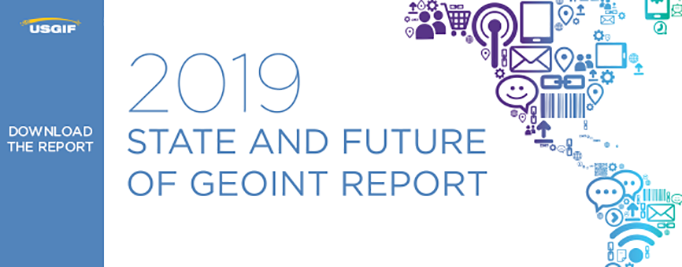USGIF Publishes 2019 State & Future of GEOINT Report
USGIF recently published its 2019 State and Future of GEOINT Report, which illustrates forward-looking trends in the GEOINT Community such as machine learning and AI, mixed reality, open-source software, and much more.

USGIF Publishes 2019 State & Future of GEOINT Report: USGIF recently published its 2019 State and Future of GEOINT Report, which illustrates forward-looking trends in the GEOINT Community such as machine learning and AI, mixed reality, open-source software, and much more. This year’s report also explores GEOINT’s role in adjacent industries and causes such as economics, nonproliferation, and infrastructure.
The annual State and Future of GEOINT Report is a collection of articles intended for use by all GEOINT practitioners. The unclassified document contains concise descriptions of problems, achievements, and emerging issues and technologies as a guide to better understand the global geospatial intelligence mission.
Articles are written by groups of volunteer authors. All members of the broad GEOINT Community to include industry, academia, and government, are invited to write for the report.
2019 marked the the first time USGIF sourced the articles in its report entirely from a virtual call for abstracts. The response was overwhelming, leading to the largest number of articles ever published in one year—21. We hope you enjoy reading this valuable community resource and share it with your colleagues.
You may download the entire report here.
Related Articles
Meet Sharifa Karwandyar, USGIF Scholarship Winner
One of our 2023 scholarship winners is Sharifa Karwandyar, a recipient of the AWS Scholarship for Inclusive Leadership in GEOINT scholarship award
USGIF Welcomes Gary Dunow as New VP for Strategic Development
Gary Dunow is joining the Foundation as Vice President for Strategic Development
Golden Ticket Program Call for 2024
Submit your applications by Monday, January 15 at midnight EST



